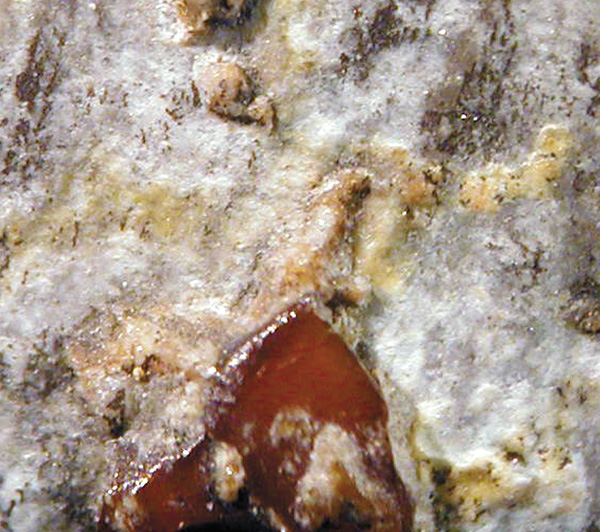Image Details

Aryeh E. Shimron
A fragment of a limestone rosette that may once have graced the Royal Stoa on the Temple Mount. Under an optical microscope, reddish-brown, sand-sized chips can be seen dotting the surface. Under these chips is a frothy yellowish-white substratum that covered the surface of the rosette. The gray patches below this are the limestone surface of the rosette.
The yellowish-white layer is the result of vitrification caused by the intense heat of the conflagration, thus forming a kind of glass. The reddish-brown chips are fused to this glass-like surface. Under X-ray diffraction, the reddish-brown chips proved to be apatite, the main content of bone in its crystalline phase.
Whether these bone chips are human or animal bones cannot be determined. They were consumed in the intense conflagration that occurred on the Temple Mount during the Roman destruction.
